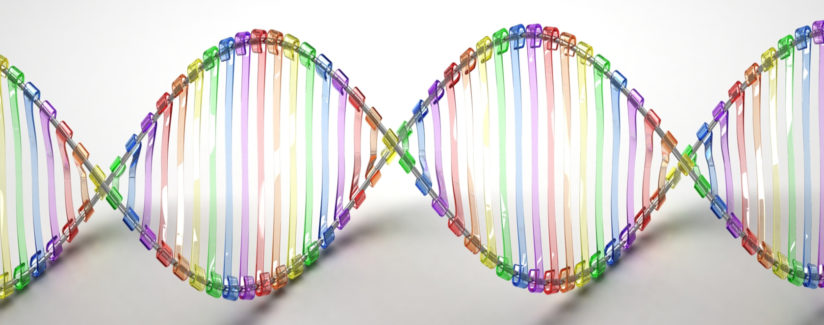
CRISPR: Why Is It Used in Foods?
05/06/2016
You may have seen or heard some recent news about something called CRISPR. While we know that a crisper drawer in the fridge can be quite handy for vegetables and other food items, what does CRISPR have to do with food? Turns out, quite a bit!
We wanted to know more about this technology, so we reached out to Dr. Alison Van Eenennaam, Cooperative Extension Specialist in Animal Genomics and Biotechnology at the University of California-Davis, for some insight into what this technology is and why it’s being used on some foods.
What is CRISPR?
Dr. Van Eenennaam: CRISPR stands for “Clustered Regulatory Interspersed Short Palindromic Repeats.” It refers to a specific type of gene editing that can precisely edit or change the genetic code, or DNA, within a specific living animal or plant. In the same way that spell check identifies and corrects single-letter errors in a word or grammar errors in a sentence, gene editing can be used to identify and change the letters that make up the genetic code.
Is gene editing the same as genetic modification/engineering?
Dr. Van Eenennaam: Gene editing is different from traditional genetic engineering. Continuing with the analogy of a word processor, genetic engineering enables a gene sequence of “foreign DNA” to be “cut and pasted” from one species to another; typically, the location where the new DNA sequence inserts into the genome is random. Gene editing can, delete, or replace a series of letters in the genetic code at a very precise location in the genome. If editing is used to add some letters, they may or may not be a sequence from the same species.
What can CRISPR gene-editing technology be used for?
Dr. Van Eenennaam: The basic idea behind gene editing is the ability to introduce, delete or replace letters in the genetic code, which could be helpful in correcting certain diseases and disorders, or for selecting specific desired traits (for example, a mushroom that doesn’t brown).
Are there any regulations surrounding the use of this technology?
Dr. Van Eenennaam: The U.S. Food and Drug Administration (FDA) requires all food placed on the market to be safe irrespective of the breeding method that was used to produce that food. That requirement is inescapable. Plants and animals produced using conventional breeding techniques require no special pre-market safety review, although they are required to be safe. In the case of plants where biotechnology has been used in the breeding process, the U.S. Department of Agriculture’s Animal and Plant Health Inspection Service (APHIS) Biotechnology Regulatory Services has a specific “Am I Regulated?” process to determine if the new plant variety may pose a pest risk to plants. If it does not, then it is not considered a regulated article. The response of APHIS to other “Am I Regulated” letters is available here.
With regard to animals, at the current time it is unclear whether gene editing will be formally regulated by the FDA Center for Veterinary Medicine as a “New Animal Drug,” as is the case with animals that have been produced using genetic engineering. Animal breeding per se is not regulated by the federal government, although it is illegal to sell an unsafe food product regardless of the breeding method that was used to produce it. Gene editing does not necessarily introduce any foreign genetic DNA or “transgenic sequences” into the genome, and many of the changes produced would not be distinguishable from naturally-occurring variations. As such, many applications will not fit the classical definition of genetic engineering.
What is CRISPR’s potential impact to food and agriculture?
Dr. Van Eenennaam: Gene editing could be used to target many different traits in agricultural breeding programs. For example, it has already been used to produce genetically hornless Holstein dairy cattle and to generate pigs that show resilience to devastating diseases such as African Swine Fever. Recently, a paper was published showing that gene-edited pigs were protected from Porcine Reproductive and Respiratory Syndrome (PRRS) virus, a particularly devastating disease of the global pork industry. It has also been used in plant breeding to produce non-browning mushrooms by knocking out the gene responsible for producing the enzyme polyphenol oxidase (PPO), which causes browning in some fruits when they are exposed to air, but otherwise lacks any indispensable role in plant metabolism.
Are there any risks associated with use of the technology?
Dr. Van Eenennaam: There are potential risks and hazards associated with any technology. In this case, the most obvious potential hazard might be off-target changes in the genome — meaning a change in the DNA code at a location other than that targeted. This same hazard is associated with conventional breeding techniques like mutagenesis. In fact, gene editing is much more precise than random mutagenesis, which has been used in the development of over 3,000 varieties of plants. Random naturally-occurring mutations happen in every species, including our own, every generation. They are the basis of the genetic variation we see in natural populations and are in fact the driving force of evolution and agricultural breeding programs.
Why was CRISPR used on mushrooms?
Dr. Van Eenennaam: According to the letter submitted to the USDA, CRISPR was used to produce non-browning mushrooms. As previously mentioned, the researched inactivated the gene that codes for polyphenol oxidase (PPO), which causes browning in some fruits when they are exposed to air. A similar naturally-occurring mutation in the same PPO gene happened in grapes in Australia in 1962 in a grape line called “Sultana.” The fruits were pale and exhibited a significant decrease in PPO activity and were used to produce golden sultanas. This PPO enzyme is also the one that was turned off in the Innate non-browning potato and the Arctic Apple. Such non-browning food products will help reduce food waste.
What do consumers need to know about foods made using CRISPR technology — mushrooms, for example? Are they safe?
Dr. Van Eenennaam: As with all breeding methods, the safety of food derived from new varieties depends on the attributes of the end product, not the breeding method that was used to derive them. It is illegal to sell an unsafe food product regardless of the breeding method that was used to produce it. Every meal we have ever consumed contains genetic variation. A bite of apple has a very different protein and DNA makeup than a bite of banana. The digestive process breaks down DNA irrespective of its origin — and DNA is GRAS (generally regarded as safe), which is good as ALL food contains DNA. The sequence of the DNA does not matter from a food safety perspective. When turning off a protein like the PPO gene, there is no new protein being introduced into the mushroom — the plant just does not produce the PPO protein that is normally consumed and digested when people eat mushrooms. Breeders are often changing the DNA and protein composition of common plants and animals — a Golden Delicious apple has a different composition than a Granny Smith apple, for example, but they are both safe to eat.
What other foods could benefit from this technology?
Dr. Van Eenennaam: Really, all domesticated plant and animal breeding programs could benefit from breeding methods that enable breeders to more precisely improve key traits like disease resistance and resilience. Such improvement are likely to be increasingly valuable given projected climate variability and extreme weather events.
The image “DNA” by Caroline Davis2010 is licensed under CC BY 2.0.


























